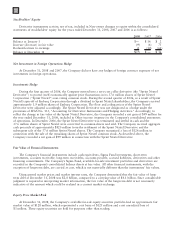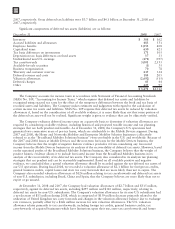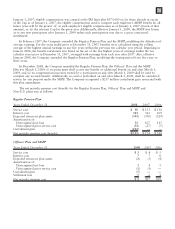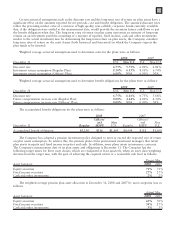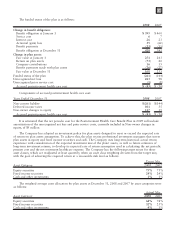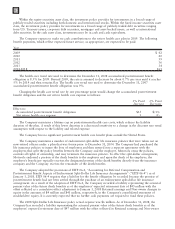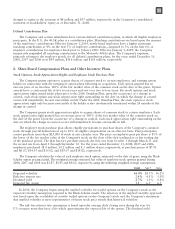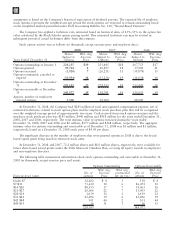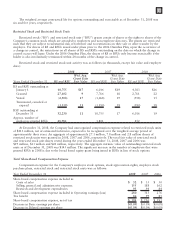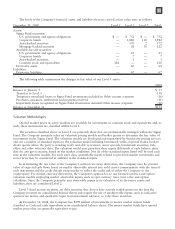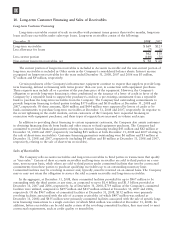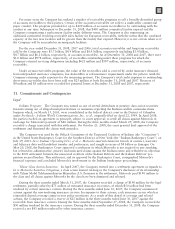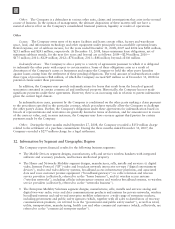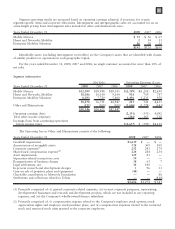Motorola 2008 Annual Report Download - page 120
Download and view the complete annual report
Please find page 120 of the 2008 Motorola annual report below. You can navigate through the pages in the report by either clicking on the pages listed below, or by using the keyword search tool below to find specific information within the annual report.
Within the equity securities asset class, the investment policy provides for investments in a broad range of
publicly-traded securities including both domestic and international stocks. Within the fixed income securities asset
class, the investment policy provides for investments in a broad range of publicly-traded debt securities ranging
from U.S. Treasury issues, corporate debt securities, mortgages and asset-backed issues, as well as international
debt securities. In the cash asset class, investments may be in cash and cash equivalents.
The Company expects to make no cash contributions to the retiree health care plan in 2009. The following
benefit payments, which reflect expected future service, as appropriate, are expected to be paid:
Year
2009 $42
2010 40
2011 39
2012 36
2013 34
2014-2018 161
The health care trend rate used to determine the December 31, 2008 accumulated postretirement benefit
obligation is 8.5% for 2009. Beyond 2009, the rate is assumed to decrease by about 0.7% per year until it reaches
5% by 2014 and then remains flat. The health care trend rate used to determine the December 31, 2007
accumulated postretirement benefit obligation was 9%.
Changing the health care trend rate by one percentage point would change the accumulated postretirement
benefit obligation and the net retiree health care expense as follows:
1% Point
Increase 1% Point
Decrease
Effect on:
Accumulated postretirement benefit obligation $15 $(13)
Net retiree health care expense 1 (1)
The Company maintains a lifetime cap on postretirement health care costs, which reduces the liability
duration of the plan. A result of this lower duration is a decreased sensitivity to a change in the discount rate trend
assumption with respect to the liability and related expense.
The Company has no significant postretirement health care benefit plans outside the United States.
The Company maintains a number of endorsement split-dollar life insurance policies that were taken out on
now-retired officers under a plan that was frozen prior to December 31, 2004. The Company had purchased the
life insurance policies to insure the lives of employees and then entered into a separate agreement with the
employees that split the policy benefits between the Company and the employee. Motorola owns the policies,
controls all rights of ownership, and may terminate the insurance policies. To effect the split-dollar arrangement,
Motorola endorsed a portion of the death benefits to the employee and upon the death of the employee, the
employee’s beneficiary typically receives the designated portion of the death benefits directly from the insurance
company and the Company receives the remainder of the death benefits.
The Company adopted the provisions of EITF 06-4, “Accounting for Deferred Compensation and
Postretirement Benefit Aspects of Endorsement Split-Dollar Life Insurance Arrangements” (“EITF 06-4”) as of
January 1, 2008. EITF 06-4 requires that a liability for the benefit obligation be recorded because the promise of
postretirement benefit had not been settled through the purchase of an endorsement split-dollar life insurance
arrangement. As a result of the adoption of EITF 06-4, the Company recorded a liability representing the actuarial
present value of the future death benefits as of the employees’ expected retirement date of $45 million with the
offset reflected as a cumulative-effect adjustment to January 1, 2008 Retained earnings and Non-owner changes to
equity in the amounts of $4 million and $41 million, respectively, in the Company’s consolidated statement of
stockholders’ equity. It is currently expected that no further cash payments are required to fund these policies.
The 2008 Split-Dollar Life Insurance policy actual expense was $6 million. As of December 31, 2008, the
Company has recorded a liability representing the actuarial present value of the future death benefits as of the
employees’ expected retirement date of $47 million with the offset reflected in Retained earnings and Non-owner
112


